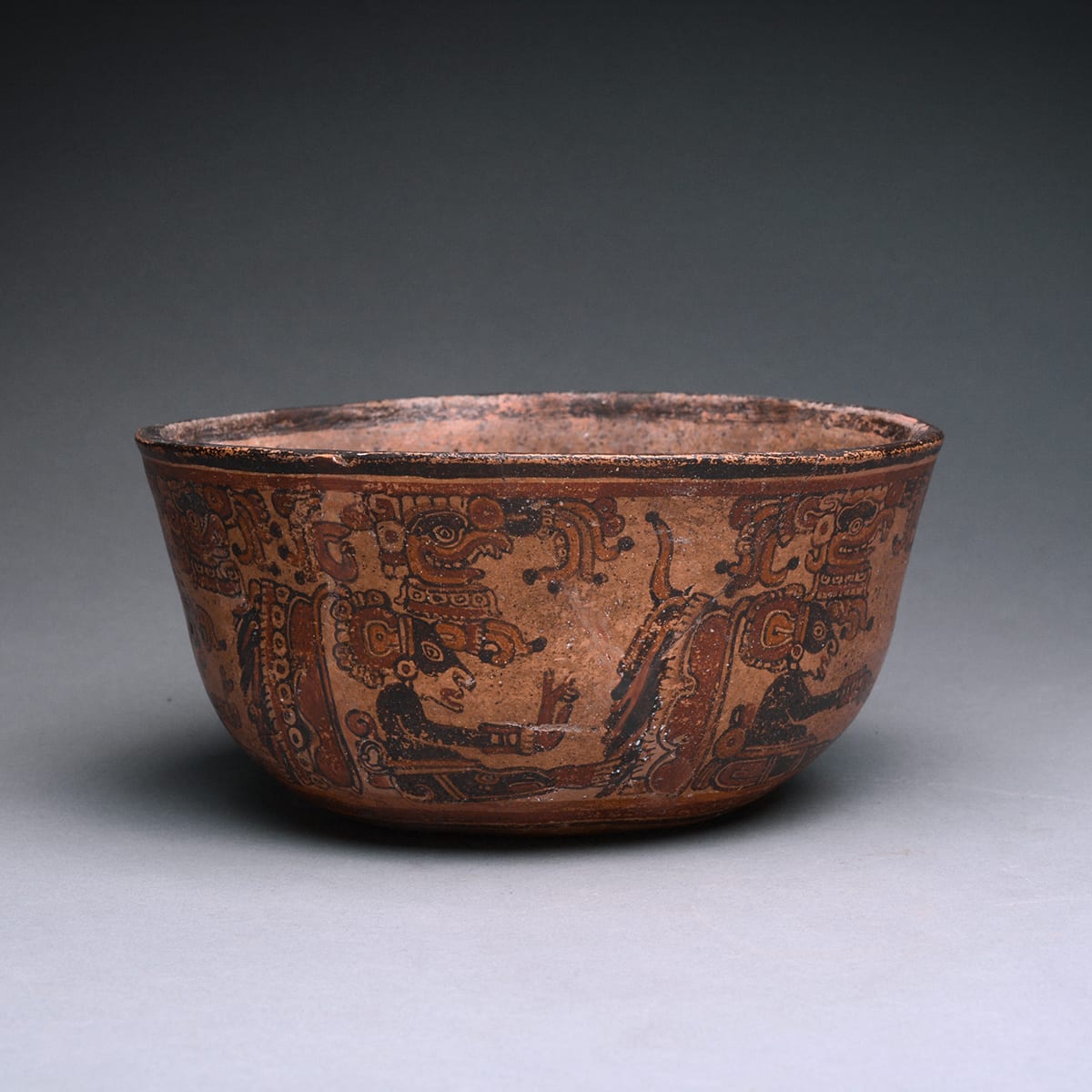Mayan Polychrome Bowl, 500 CE - 900 CE
Terracotta
height 8.9 cm
height 3 1/2 in
height 3 1/2 in
PF.4530
Further images
Maya artists did not concern themselves with originality; since content, media and function were already an established convention handed down to them. Often an artist was born into the profession,...
Maya artists did not concern themselves with originality; since content, media and function were already an established convention handed down to them. Often an artist was born into the profession, highly trained from a young age, sharing common pattern books and living closely with other artists. Individual creativity was expressed by the refinement of execution and in the use of subtle metaphor that at times approaches visual word play. In these two aspects the Maya artists were masters, and created one of the great painting traditions in the world. Maya imagery does not expand outwards but inwards; representing a vision of reality and the supernatural which is distinctly their own. The painting on this beautiful bowl is a scene or a series that is meant to be read, probably in sequence. The central figure, repeated five times, shows a seated male dressed in a very elaborate costume. In each frame he extends his hand, but the fingers change their configuration in a manner that may be significant. If read counter-clock wise, start at the figure who is extending his thumb and forefinger. In the next frame they are lifted, followed by the third where the middle finger touches the thumb. Then suddenly the palm is outstretched, followed by the last where the fingers are slightly curled, as if he is holding something. The man is probably a king making an offering to a god, and each frame part of a visual sequence, like a reel of film, where the action is taking place. The figure above the man resembles the vision serpent and may account for why it rests on the forehead, helping the king to see into another realm during his supplication. It is the brilliance of Maya art that offers the opportunity to witness a secret, mysterious ritual in a relatively small space; with the effect of expanding our own horizons.







